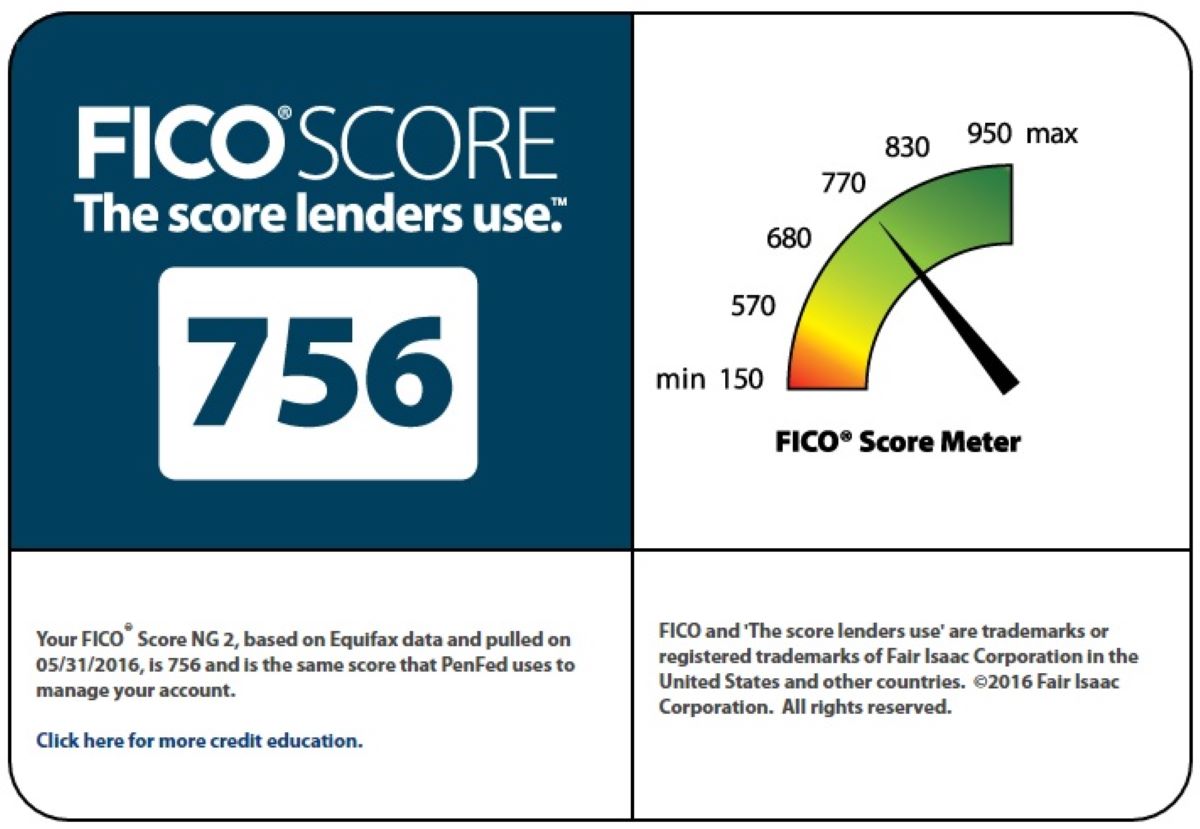

Finance
Why Mergers And Acquisitions Are Important
Published: February 25, 2024
Learn why mergers and acquisitions are crucial in the finance industry and how they impact businesses and the economy. Understand the significance of M&A in driving financial growth and strategy.
(Many of the links in this article redirect to a specific reviewed product. Your purchase of these products through affiliate links helps to generate commission for LiveWell, at no extra cost. Learn more)
Table of Contents
Introduction
Mergers and acquisitions (M&A) have become an integral part of the modern business landscape, shaping the strategies of companies across diverse industries. This article aims to delve into the multifaceted significance of M&A activities, shedding light on the various ways in which they contribute to organizational growth and development. As we navigate through the intricacies of M&A, we will uncover the pivotal role they play in driving strategic expansion, enhancing market positioning, fostering synergy and cost savings, facilitating access to new technologies and resources, and promoting diversification.
The realm of mergers and acquisitions is dynamic and complex, encompassing a spectrum of strategic decisions and negotiations that can redefine the trajectory of businesses. Understanding the underlying motives and potential benefits of M&A is crucial for stakeholders, investors, and industry enthusiasts alike. By exploring the nuances of this phenomenon, we can gain valuable insights into the mechanisms that drive corporate evolution and innovation.
In the subsequent sections, we will embark on a comprehensive exploration of the importance of mergers and acquisitions, unraveling the strategic imperatives that underpin these transformative endeavors. From fortifying market presence to harnessing synergies and propelling technological advancements, the impact of M&A reverberates across the corporate landscape, shaping the competitive dynamics of the global economy. Join us on this enlightening journey as we unveil the profound significance of M&A and its far-reaching implications for businesses worldwide.
The Importance of Mergers and Acquisitions
At the heart of the corporate realm, mergers and acquisitions stand as catalysts for transformation, driving profound changes that can redefine the competitive landscape and reshape the destiny of organizations. The significance of M&A transcends mere financial transactions; it encompasses strategic imperatives that hold the power to bolster market presence, foster innovation, and unlock new avenues for growth.
As businesses navigate the complexities of a rapidly evolving global economy, the importance of mergers and acquisitions becomes increasingly pronounced. These strategic endeavors serve as instrumental tools for companies seeking to consolidate their market position, expand their footprint, and harness synergies that propel them towards sustainable success. By embracing M&A, organizations can unlock a myriad of opportunities, ranging from strategic expansion to diversification and access to novel technologies.
Moreover, the importance of M&A extends beyond the realm of individual companies, permeating the broader fabric of the economy. These activities have the potential to spur industry-wide realignments, fostering innovation, and driving efficiency across sectors. Through mergers and acquisitions, companies can amplify their competitive edge, fortify their market positioning, and chart a course towards long-term viability in an increasingly competitive landscape.
Furthermore, M&A activities hold the potential to catalyze economic growth, fueling investment, and innovation while fostering the creation of robust, synergistic ecosystems. By facilitating the consolidation of complementary strengths and resources, mergers and acquisitions pave the way for enhanced collaboration, innovation, and value creation, thereby contributing to the overall prosperity of the business ecosystem.
As we delve deeper into the intricacies of mergers and acquisitions, it becomes evident that their importance transcends financial metrics, encapsulating a strategic paradigm that underpins the evolution and sustainability of businesses. In the subsequent sections, we will unravel the multifaceted dimensions of this significance, exploring how M&A activities drive strategic expansion, foster market positioning, unlock synergies, and enable access to new technologies and resources.
Strategic Expansion
One of the paramount reasons why mergers and acquisitions hold immense significance for businesses is their role in driving strategic expansion. In a fiercely competitive global landscape, companies are constantly seeking avenues for growth and diversification. M&A activities provide a strategic conduit through which organizations can expand their reach, penetrate new markets, and capitalize on emerging opportunities.
Through mergers and acquisitions, companies can swiftly gain access to new geographies, customer segments, and distribution channels, thereby accelerating their expansion initiatives. This strategic maneuvering enables businesses to bolster their market presence, tap into untapped potential, and fortify their competitive positioning in a dynamic business environment.
Moreover, M&A activities empower companies to leverage the strengths and capabilities of their counterparts, amplifying their collective potential for growth and innovation. By integrating complementary resources and expertise, organizations can chart a course towards sustainable expansion, harnessing synergies that drive value creation and propel them towards new frontiers of success.
Furthermore, strategic expansion through mergers and acquisitions allows companies to diversify their product offerings, enhance their service portfolios, and capitalize on emerging trends and consumer preferences. This diversification not only enriches the value proposition for customers but also insulates businesses from market volatilities, thereby fostering resilience and long-term sustainability.
As businesses navigate the complexities of a rapidly evolving global economy, strategic expansion emerges as a pivotal imperative for sustained relevance and growth. Mergers and acquisitions serve as strategic enablers, empowering companies to embark on transformative journeys that transcend traditional boundaries, unlock new growth trajectories, and position them as formidable players in the global marketplace.
Market Positioning
Amidst the dynamic currents of the business landscape, market positioning stands as a cornerstone of strategic relevance and competitive advantage. Mergers and acquisitions play a pivotal role in shaping the market positioning of companies, enabling them to carve out distinctive identities, fortify their competitive edge, and resonate with their target audience.
Through strategic alliances and acquisitions, companies can augment their market positioning by consolidating their strengths, expanding their product portfolios, and harnessing synergies that amplify their value proposition. This strategic maneuvering allows businesses to differentiate themselves in crowded market spaces, resonate with diverse customer segments, and establish themselves as leaders in their respective domains.
Furthermore, mergers and acquisitions empower companies to capitalize on emerging market trends, consumer preferences, and technological advancements, thereby positioning themselves as innovators and trendsetters. By integrating novel capabilities and expertise, organizations can reinvent their market positioning, pivot towards new growth avenues, and elevate their relevance in an ever-evolving business landscape.
Moreover, M&A activities enable companies to fortify their market positioning by leveraging the brand equity, customer base, and distribution networks of their counterparts. This strategic amalgamation of strengths not only amplifies the market reach of businesses but also enhances their resonance with customers, fostering loyalty and advocacy in an increasingly discerning marketplace.
As companies navigate the complexities of market dynamics and consumer behaviors, the strategic significance of mergers and acquisitions in shaping market positioning becomes increasingly pronounced. These transformative endeavors empower businesses to realign their strategies, revitalize their brand narratives, and solidify their foothold in the competitive arena, thereby charting a course towards sustained relevance and resonance.
Synergy and Cost Savings
One of the compelling drivers behind mergers and acquisitions is the potential for unlocking synergies and achieving cost savings. Through strategic consolidation and integration, companies can harness synergistic benefits that transcend the sum of individual capabilities, propelling them towards enhanced efficiency and value creation.
Mergers and acquisitions pave the way for synergies by enabling companies to combine their strengths, expertise, and resources, thereby amplifying their collective potential for innovation and growth. This strategic amalgamation fosters a culture of collaboration, knowledge sharing, and cross-pollination of ideas, culminating in synergistic outcomes that drive operational excellence and market leadership.
Furthermore, M&A activities facilitate cost savings through economies of scale, streamlined operations, and optimized resource utilization. By consolidating redundant functions, rationalizing processes, and leveraging shared infrastructure, companies can unlock substantial cost efficiencies, thereby enhancing their profitability and resilience in a competitive business landscape.
Moreover, mergers and acquisitions empower companies to capitalize on procurement synergies, negotiate favorable contracts, and optimize their supply chain networks, thereby driving down costs and enhancing their competitive positioning. This strategic maneuvering allows businesses to achieve sustainable cost savings while fortifying their capabilities to deliver value to customers and stakeholders.
As companies navigate the imperatives of operational efficiency and sustainable growth, the significance of mergers and acquisitions in unlocking synergies and achieving cost savings becomes increasingly pronounced. These transformative endeavors not only drive financial performance but also foster a culture of continuous improvement, innovation, and resilience, positioning companies for sustained success in a dynamic business landscape.
Access to New Technologies and Resources
Mergers and acquisitions serve as strategic gateways for companies to gain access to new technologies and resources, positioning them at the forefront of innovation and competitive advantage. In an era defined by rapid technological advancements, the imperative to harness cutting-edge capabilities has become integral to sustaining relevance and driving growth.
Through strategic alliances and acquisitions, companies can tap into the technological prowess and intellectual property of their counterparts, thereby accelerating their innovation initiatives and enhancing their product development capabilities. This strategic maneuvering enables businesses to leverage novel technologies, research and development expertise, and intellectual assets, thereby fostering a culture of innovation and differentiation in the market.
Furthermore, mergers and acquisitions empower companies to fortify their resource base by integrating diverse talent pools, expertise, and intellectual capital. This strategic amalgamation of human resources and knowledge assets not only enriches the organizational fabric but also propels companies towards new frontiers of growth and competitiveness.
Moreover, M&A activities enable companies to gain access to proprietary technologies, patents, and strategic partnerships, thereby bolstering their capabilities to deliver pioneering solutions and services to customers. This strategic alignment with technological advancements not only amplifies the value proposition for customers but also positions companies as leaders in their respective domains, driving sustained relevance and resonance in the market.
As businesses navigate the imperatives of technological disruption and innovation, the significance of mergers and acquisitions in facilitating access to new technologies and resources becomes increasingly pronounced. These transformative endeavors empower companies to pivot towards new growth trajectories, harness the power of innovation, and position themselves as trailblazers in an ever-evolving business landscape.
Diversification
Mergers and acquisitions play a pivotal role in enabling companies to embark on transformative journeys of diversification, thereby expanding their horizons and mitigating risks associated with concentration in specific markets or product lines. Diversification stands as a strategic imperative for businesses seeking to fortify their resilience, tap into new growth opportunities, and insulate themselves from market volatilities.
Through strategic alliances and acquisitions, companies can diversify their product portfolios, service offerings, and market reach, thereby expanding their revenue streams and mitigating the impact of market fluctuations. This strategic maneuvering allows businesses to pivot towards new growth avenues, tap into emerging trends, and resonate with diverse customer segments, thereby enhancing their long-term sustainability and relevance in the market.
Furthermore, mergers and acquisitions empower companies to diversify their geographic footprint, enabling them to gain access to new markets, customer demographics, and cultural nuances. This strategic expansion not only amplifies the market reach of businesses but also fosters a global outlook, enriching their perspectives and capabilities to navigate diverse business landscapes.
Moreover, M&A activities facilitate diversification by integrating complementary strengths, expertise, and resources, thereby fostering a culture of cross-pollination of ideas and innovation. This strategic amalgamation not only enriches the value proposition for customers but also propels companies towards new frontiers of growth and differentiation in the market.
As businesses navigate the imperatives of sustainable growth and resilience, the significance of mergers and acquisitions in driving diversification becomes increasingly pronounced. These transformative endeavors not only mitigate risks associated with market concentration but also position companies to capitalize on emerging opportunities, foster innovation, and chart a course towards sustained relevance and resonance in a dynamic business landscape.
Conclusion
Mergers and acquisitions stand as transformative catalysts that empower companies to navigate the complexities of the modern business landscape, driving strategic expansion, fortifying market positioning, unlocking synergies, accessing new technologies and resources, and embarking on journeys of diversification. The multifaceted significance of M&A activities reverberates across industries, shaping the competitive dynamics of the global economy and propelling businesses towards sustainable growth and innovation.
As companies embrace the imperatives of strategic expansion, market positioning, and diversification, mergers and acquisitions emerge as instrumental enablers that propel them towards new frontiers of success. These transformative endeavors not only drive financial performance but also foster cultures of collaboration, innovation, and resilience, positioning companies as leaders in their respective domains.
Furthermore, the potential for unlocking synergies and achieving cost savings through M&A activities underscores their strategic importance in driving operational efficiency and value creation. By harnessing synergistic benefits and optimizing resource utilization, companies can enhance their profitability and fortify their capabilities to deliver value to customers and stakeholders.
Moreover, the imperative to gain access to new technologies and resources underscores the strategic relevance of mergers and acquisitions in fostering innovation and competitive advantage. Through strategic alliances and acquisitions, companies can tap into novel capabilities, intellectual assets, and talent pools, positioning themselves at the forefront of technological advancements and market leadership.
As we reflect on the profound significance of mergers and acquisitions, it becomes evident that these transformative endeavors hold the power to reshape industries, drive efficiency, and foster sustainable growth. By embracing the strategic imperatives that underpin M&A activities, companies can chart a course towards enduring relevance and resilience in an ever-evolving business landscape, positioning themselves as trailblazers in the global marketplace.














